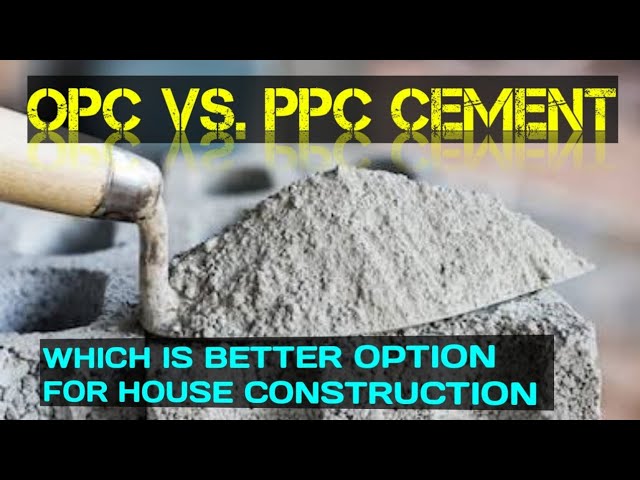#civilguruji #civilengineers #Cement
Types Of Cement their Uses | Properties of Cement | OPC | PPC
Enroll and get started :- https://tinyurl.com/COPsLifetime1
Get 75% Discount Use Coupon Code :- GURUJI
For Training Call Now : 9111001234
ABOUT THIS VIDEO :-
In this video Er. Kishan Ojha & Corporate Trainer of Civil Guruji (Civil Engineers Training Institute) is Explaining About Types Of Cement their Uses | Properties of Cement | OPC | PPC
Types of Cement Used In The Construction Industry
In the construction industry, there are different types of cement. The differences between each type of cement are its properties, uses and composition materials used during the manufacturing process.
Cement is a cover material which makes a bond between aggregates and reinforcing materials. Over the years, cement in Malaysia has further developed thanks to technology.
There are different types of cement for different construction works. Keep reading to learn more about the most common ones.
Different Types Of Cement
1. Ordinary Portland Cement (OPC)
Ordinary Portland Cement also known as OPC is a type of cement that is manufactured and used worldwide. It is widely used for all purposes including:
Concrete: When OPC is mixed with aggregates and water, it makes concrete, which is widely used in the construction of buildings
Mortar: For joining masonry
Plaster: To give a perfect finish to the walls
Cement companies in Malaysia offer OPC in three different grades, namely grades 33, 43, and 53.
Besides the aforementioned purposes, Ordinary Portland cement is also used to manufacture grout, wall putty, solid concrete blocks, AAC blocks, and different types of cement.
2. Portland Pozzolana Cement (PPC)
To prepared PPC or Portland Pozzolana cement, you need to grind pozzolanic clinker with Portland cement.
PPC has a high resistance to different chemical assaults on concrete. It is widely used in construction such as:
Marine structures
Sewage works
Bridges
Piers
Dams
Mass concrete works
3. Rapid Hardening Cement
Cement suppliers in Malaysia also offer rapid Hardening cement. Rapid Hardening Cement is made when finely grounded C3S is displayed in OPC with higher concrete.
It is commonly used in rapid constructions like the construction pavement.
4. Extra Rapid Hardening Cement
As the name suggests, Extra rapid hardening cement gains strength quicker and it is obtained by adding calcium chloride to rapid hardening cement.
Extra rapid hardening cement is widely used in cold weather concreting, to set the cement fast. It is about 25% faster than that of rapid hardening cement by one or two days.
5. Low Heat Cement
Cement manufacturers in Malaysia offers low heat cement that is prepared by keeping the percentage of tricalcium aluminate below 6% and by increasing the proportion of C2S.
This low heat cement is used in mass concrete construction like gravity dams. It is important to know that it is less reactive and the initial setting time is greater than OPC.
6. Sulfates Resisting Cement
This type of cement is manufactured to resist sulfate attack in concrete. It has a lower percentage of Tricalcium aluminate.
Sulfates resisting cement is used for constructions in contact with soil or groundwater having more than 0.2% or 0.3% g/l sulfate salts respectively.
It can also be used in concrete surfaces subjected to alternate wetting and drying like bridge piers.
7. Quick Setting Cement
Cement suppliers in Malaysia also offer quick setting cement which sets faster than OPC but the strength remains the same. In this formula, the proportion of gypsum is reduced.
Quick setting cement is used for constructions that need a quick setting, like underwater structures and in cold and rainy weather conditions.
8. Blast Furnace Slag Cement
This type of cement is manufactured by grinding the clinker with about 60% slag and it is similar to Portland cement. It is used for constructions where economic considerations are important.
9. High Alumina Cement
High alumina cement is obtained by mixing calcining bauxite and lime with clinker during the manufacturing process of OPC.
To be considered high alumina cement, the total amount of alumina content should be at least 32%, and the ratio of the weight of alumina to lime should be kept between 0.85 to 1.30.
The most common uses are in constructions that are subject to high temperatures like a workshop, refractory, and foundries.
10. White Cement
This type of cement is manufactured by using raw materials that are free from iron and oxide. White cement needs to have lime and clay in a higher proportion. It is similar to OPC but it is more expensive.

